Abstract
1. The maturation of the convulsogenic activity of the caudal brainstem and spinal cord in the developing albino rat was studied by intraperitoneal injections of strychnine sulphate.
2. The observed responses were classed as hyperexcitability and hypertonic responses, graded 1 to 4. The complete tonic seizure (grade 4 hypertonic reaction, strychnine tetanus, maximal response) was obtained in all age groups, from birth to adulthood. The responses were grouped in sequences, and two patterns were distinguished: an infant one (from birth to 3 weeks) and an adult one (from 3 weeks on).
3. All doses varied according to age. The curve obtained for the median convulsive dose falls into two parts: descending, from birth to 3 weeks, and ascending, from 3 weeks on. Each part corresponded to a sequence pattern, the descending one to the infant pattern, and the ascending one to the adult pattern.
4. From these patterns and the corresponding median effective doses, three stages of the convulsogenic maturation of the spinal cord were distinguished: immaturity, pharmacological maturity and convulsogenic maturity.
5. It is suggested that the mechanism responsible for the complete tonic seizure is fully functional from birth, while that responsible for clonic seizure only reaches full maturity at 3 weeks of age.
Full text
PDF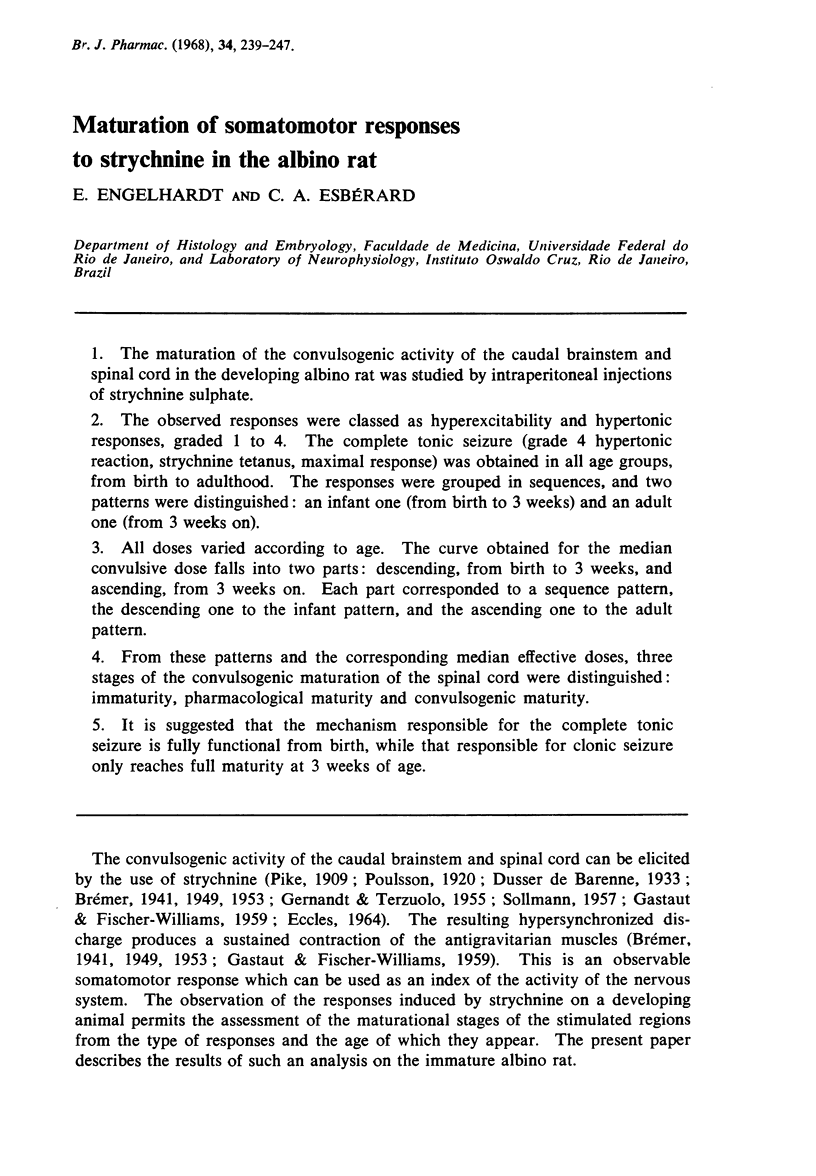
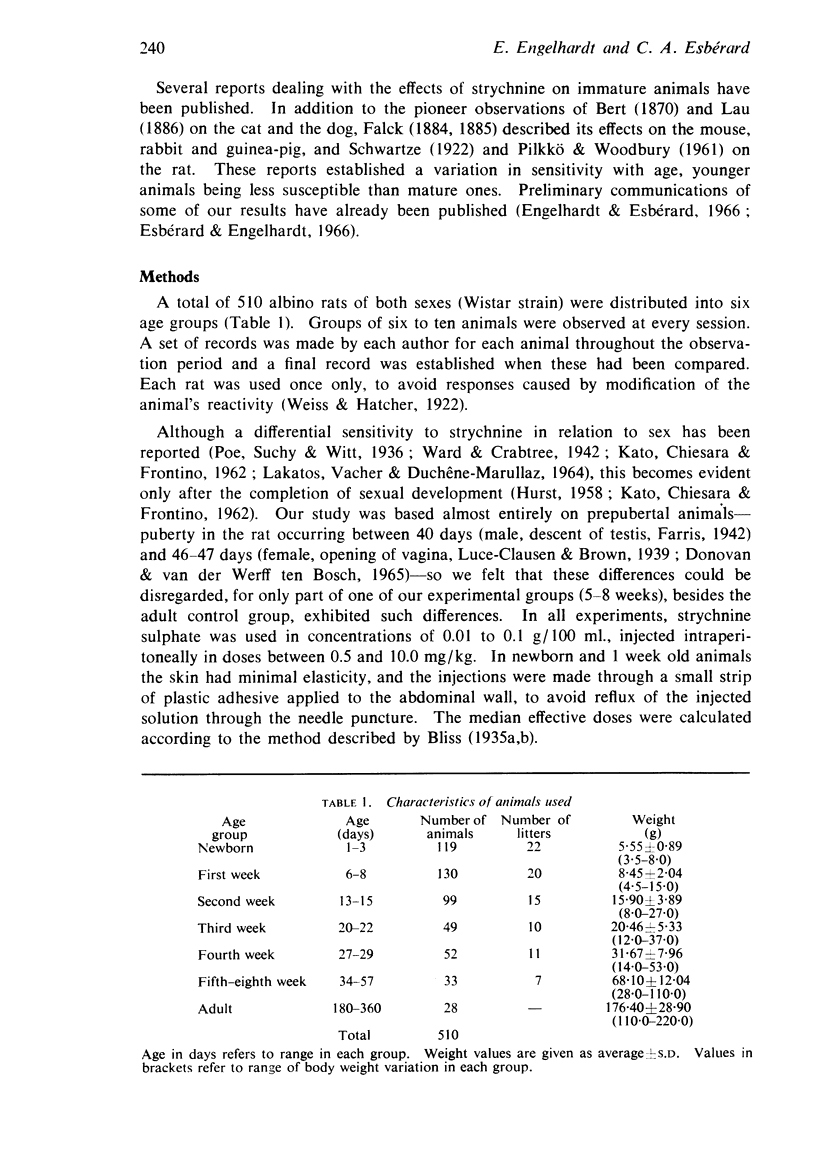
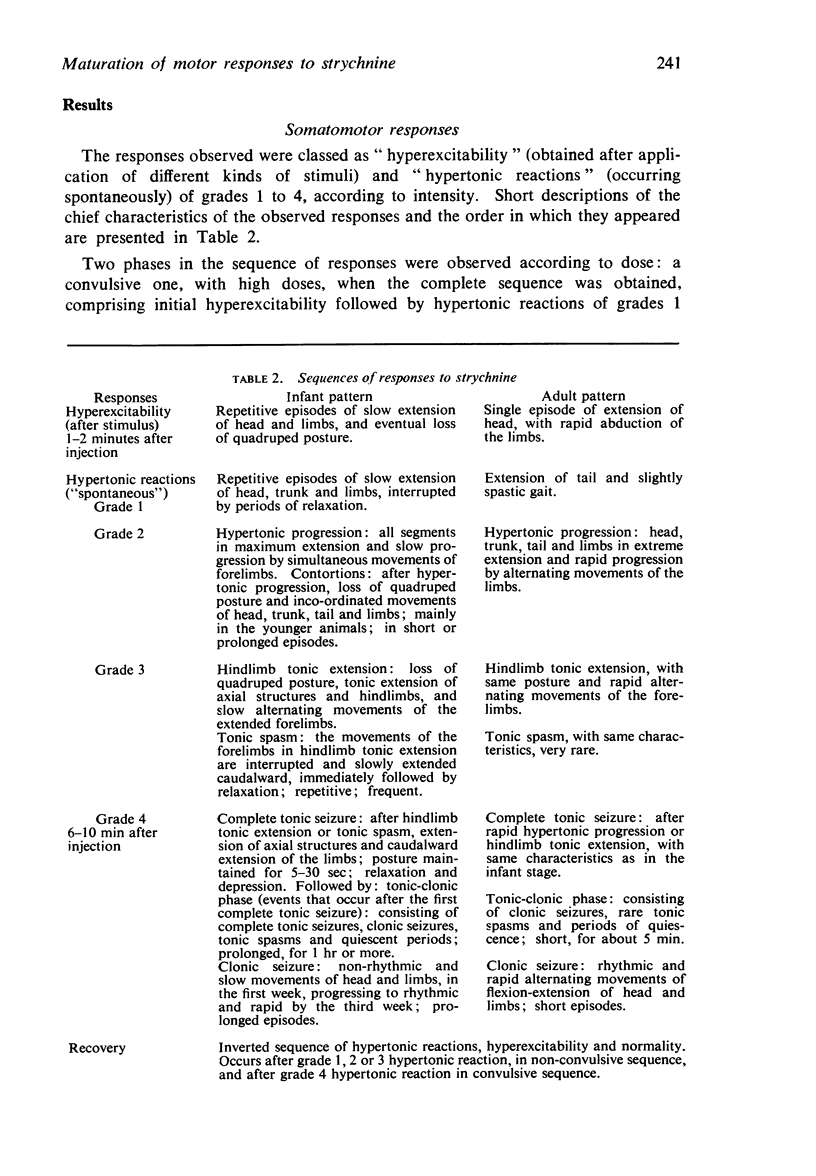
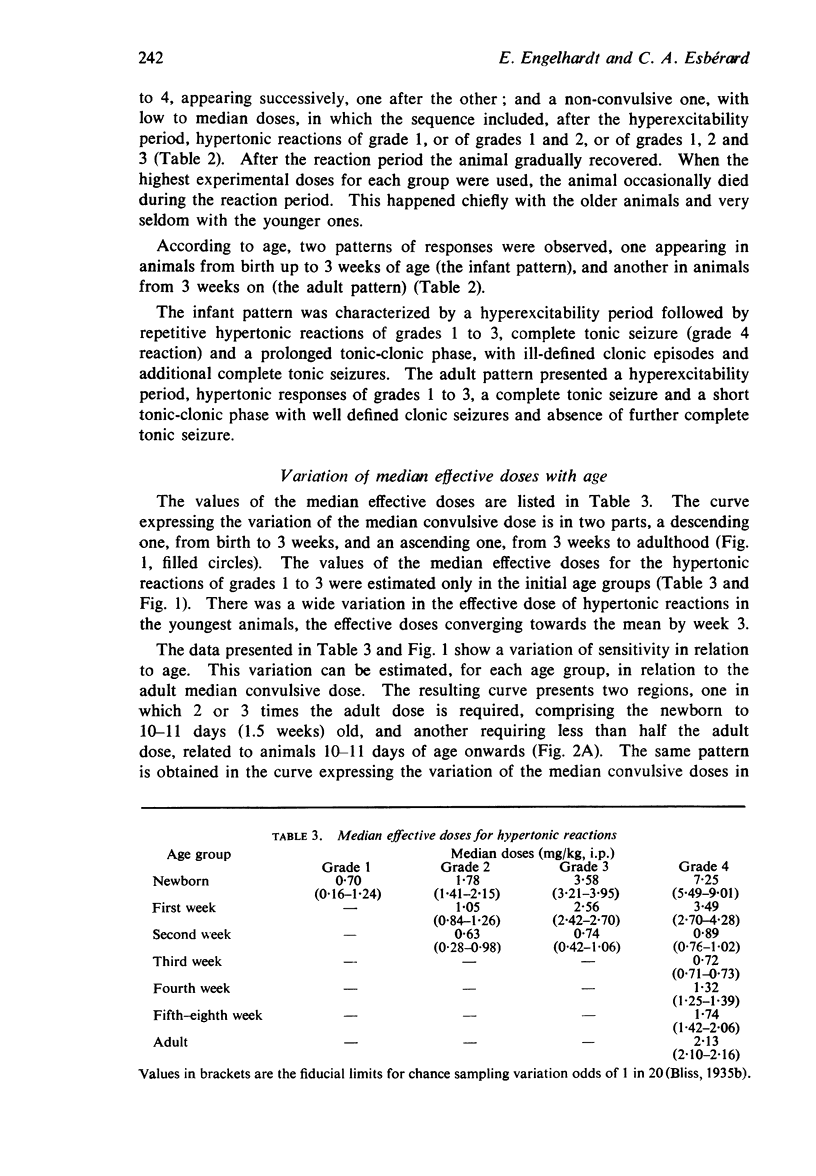
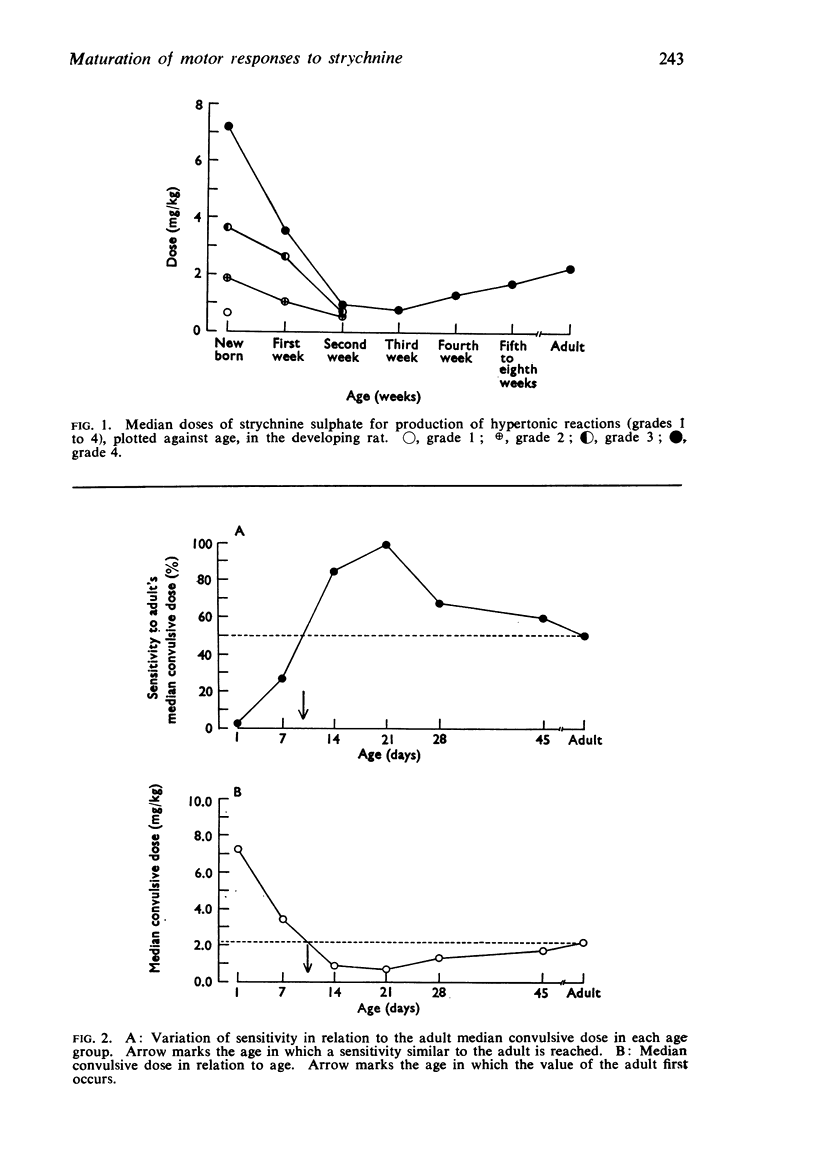

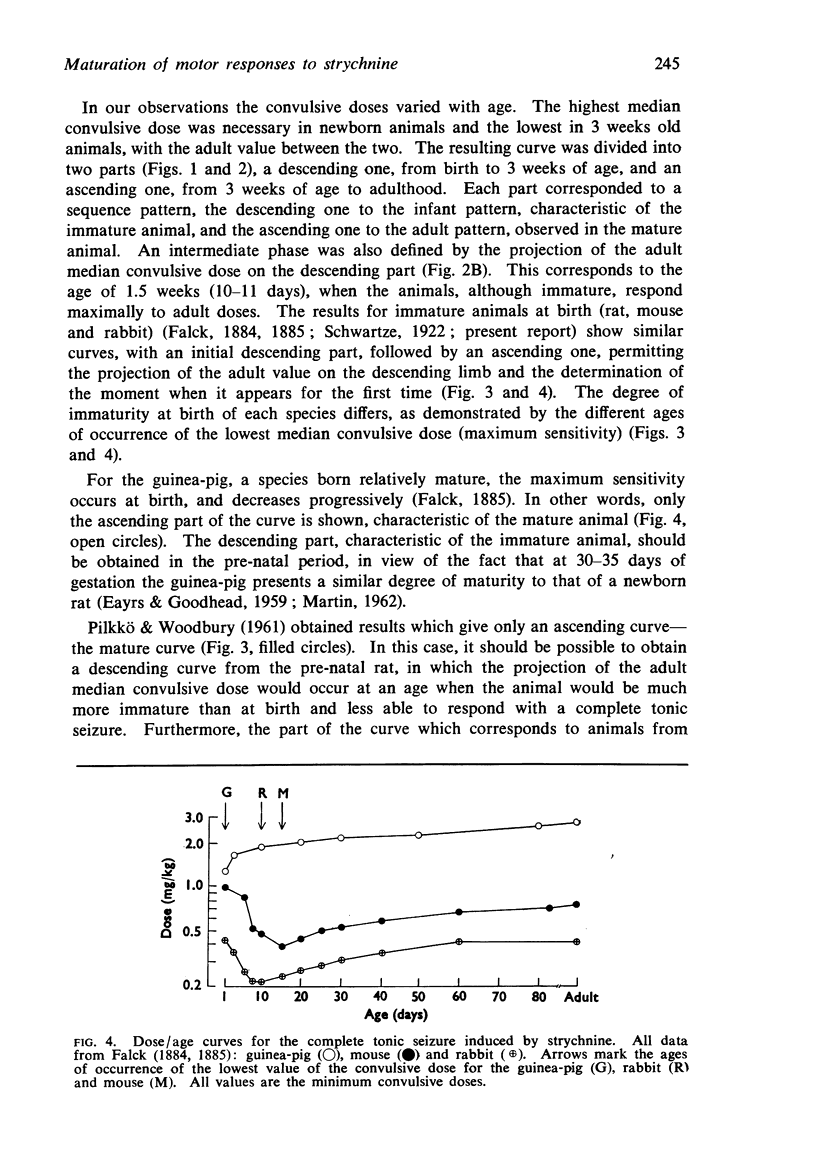
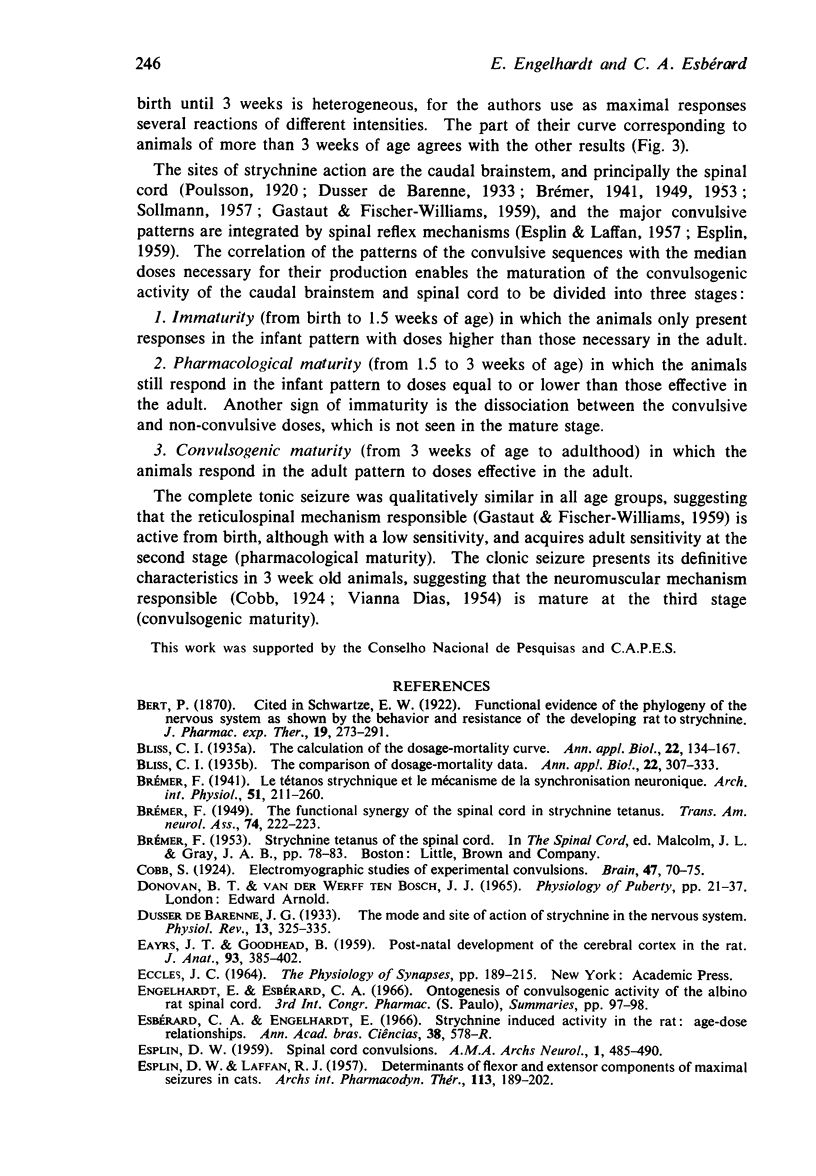
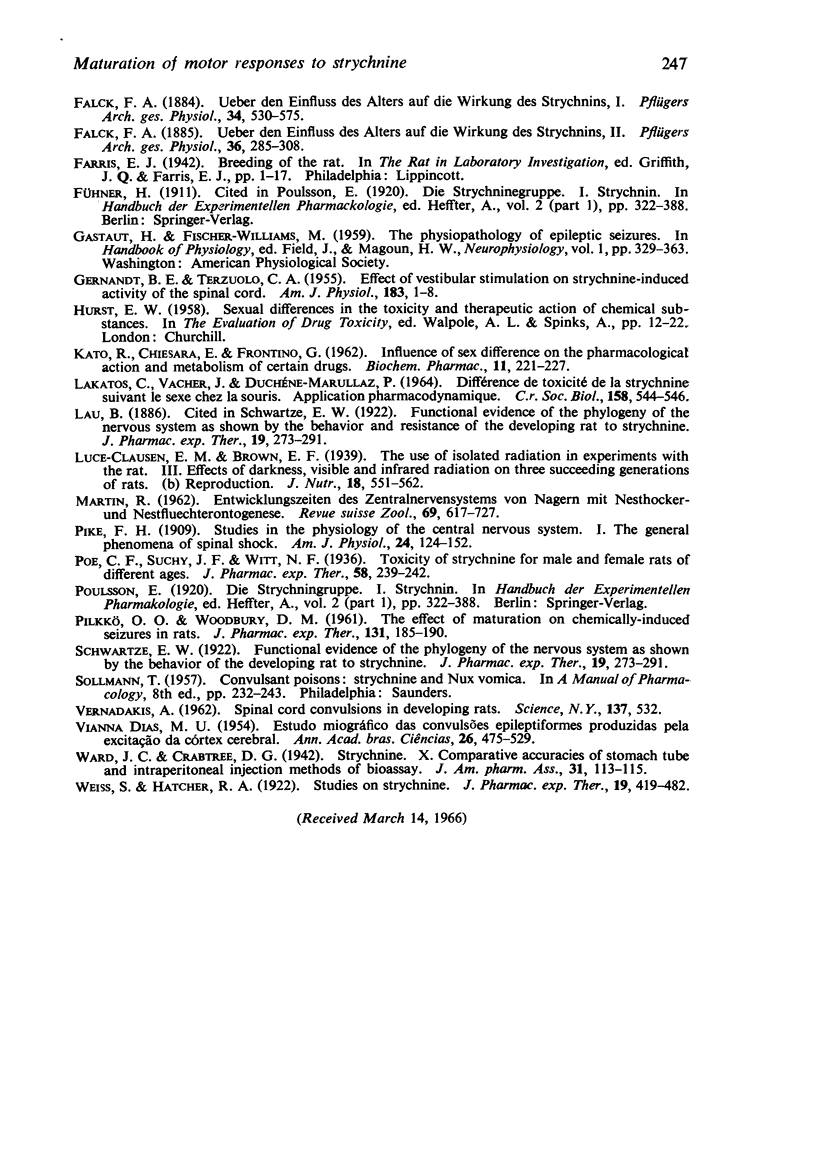
Selected References
These references are in PubMed. This may not be the complete list of references from this article.
- EAYRS J. T., GOODHEAD B. Postnatal development of the cerebral cortex in the rat. J Anat. 1959 Oct;93:385–402. [PMC free article] [PubMed] [Google Scholar]
- ESPLIN D. W., LAFFAN R. J. Determinants of flexor and extensor components of maximal seizures in cats. Arch Int Pharmacodyn Ther. 1957 Dec 1;113(1-2):189–202. [PubMed] [Google Scholar]
- ESPLIN D. W. Spinal cord convulsions. Arch Neurol. 1959 Nov;1:485–490. doi: 10.1001/archneur.1959.03840050019003. [DOI] [PubMed] [Google Scholar]
- GERNANDT B. E., TERZUOLO C. A. Effect of vestibular stimulation on strychnine-induced activity of the spinal cord. Am J Physiol. 1955 Oct;183(1):1–8. doi: 10.1152/ajplegacy.1955.183.1.1. [DOI] [PubMed] [Google Scholar]
- KATO R., CHIESARA E., FRONTINO G. Influence of sex difference on the pharmacological action and metabolism of some drugs. Biochem Pharmacol. 1962 Mar;11:221–227. doi: 10.1016/0006-2952(62)90077-1. [DOI] [PubMed] [Google Scholar]
- LAKATOS C., VACHER J., DUCHENE-MARULLAZ P. DIFF'ERENCE DO TOXICIT'E DE LA STRYCHNINE SUIVANT LE SEXE CHEZ LA SOURIS. APPLICATION PHARMACODYNAMIQUE. C R Seances Soc Biol Fil. 1964;158:544–546. [PubMed] [Google Scholar]
- PYLKKO O. O., WOODBURY D. M. The effect of maturation on chemically-induced seizures in rats. J Pharmacol Exp Ther. 1961 Feb;131:185–190. [PubMed] [Google Scholar]
- VERNADAKIS A. Spinal cord convulsions in developing rats. Science. 1962 Aug 17;137(3529):532–532. doi: 10.1126/science.137.3529.532. [DOI] [PubMed] [Google Scholar]


